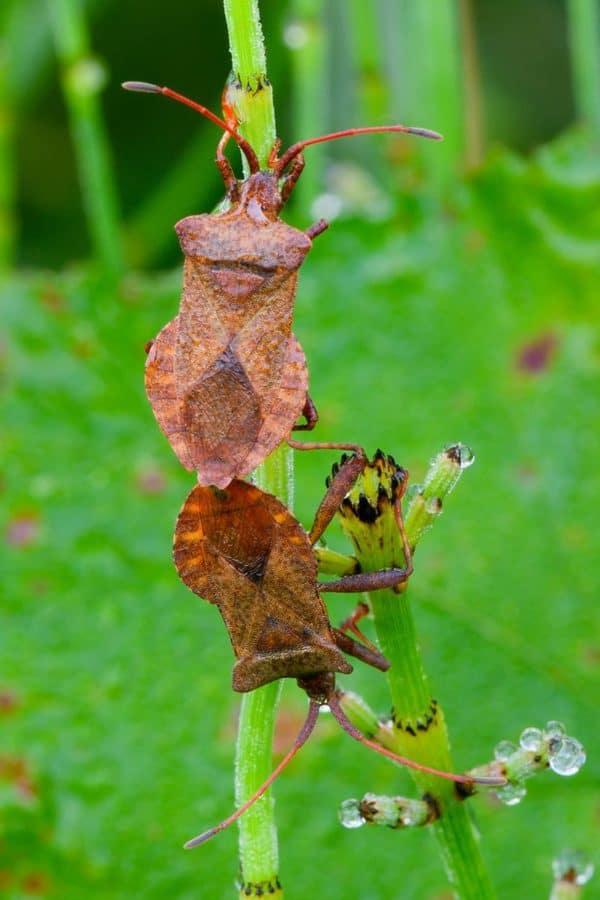If you’ve ever grown summer squash, cucumbers, melons, or pumpkins in your vegetable garden, you’ve probably met a squash bug. These little shield-shaped bugs can decimate cucurbits in a flash, and unfortunately, they seem to show up every single growing season.
A squash bug infestation can quickly cause wilting vines, and if not properly managed, squash bugs can easily kill an entire crop of squash. Thankfully, we have a bunch of solutions to both prevent squash bugs and to stop them in their tracks.
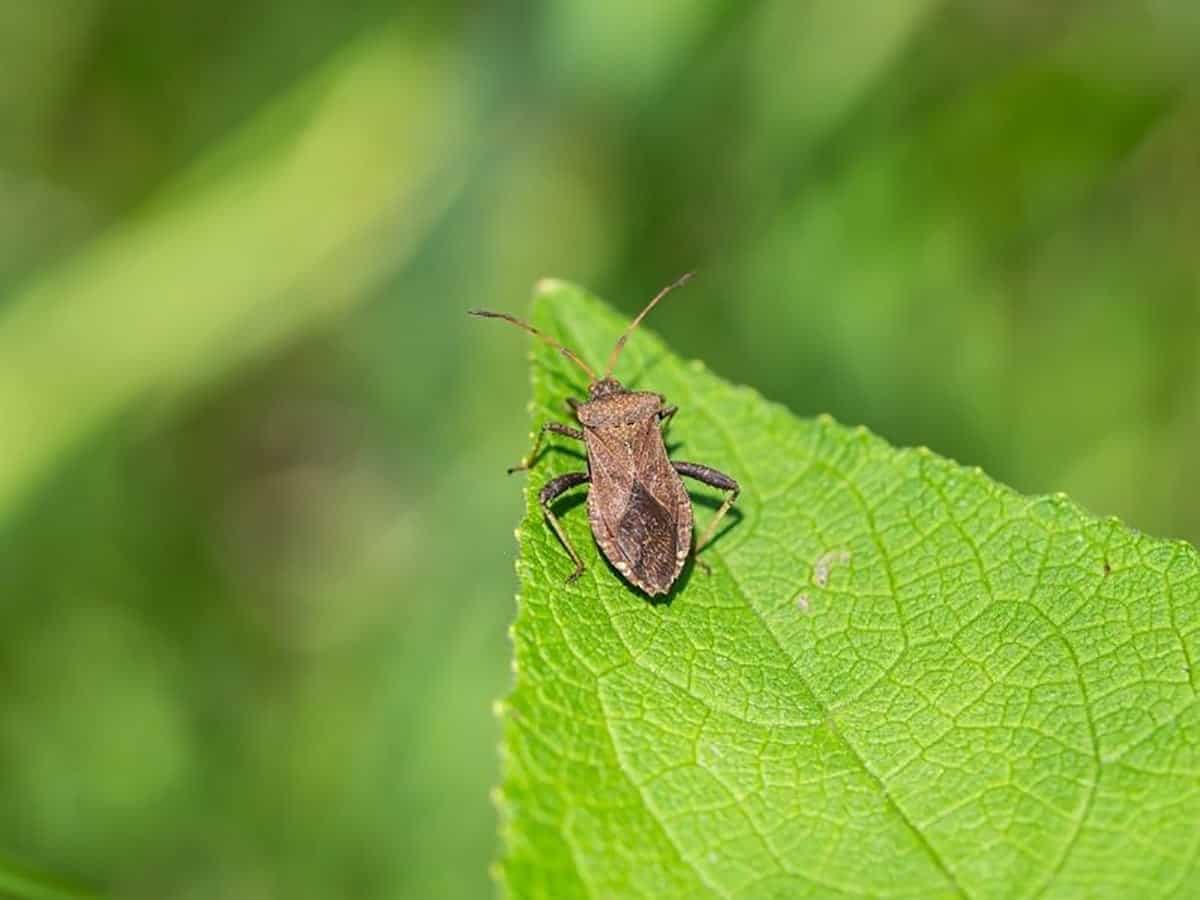
Table of Contents
What do squash bugs look like?
Adult squash bugs (Anasa tristis) measure about 1/2 to 3/4 inch in length and look like they are carrying an oval shield on their backs. Adult bugs are gray or brown in color and their abdomens have orange and brown stripes.
They look very similar to a stink bug. However, stink bugs tend to feed mostly on legumes, so if you find a shield-shaped bug on your cucurbits (cucumbers, winter squash, summer squash, cantaloupe, etc.), it’s probably a squash bug!
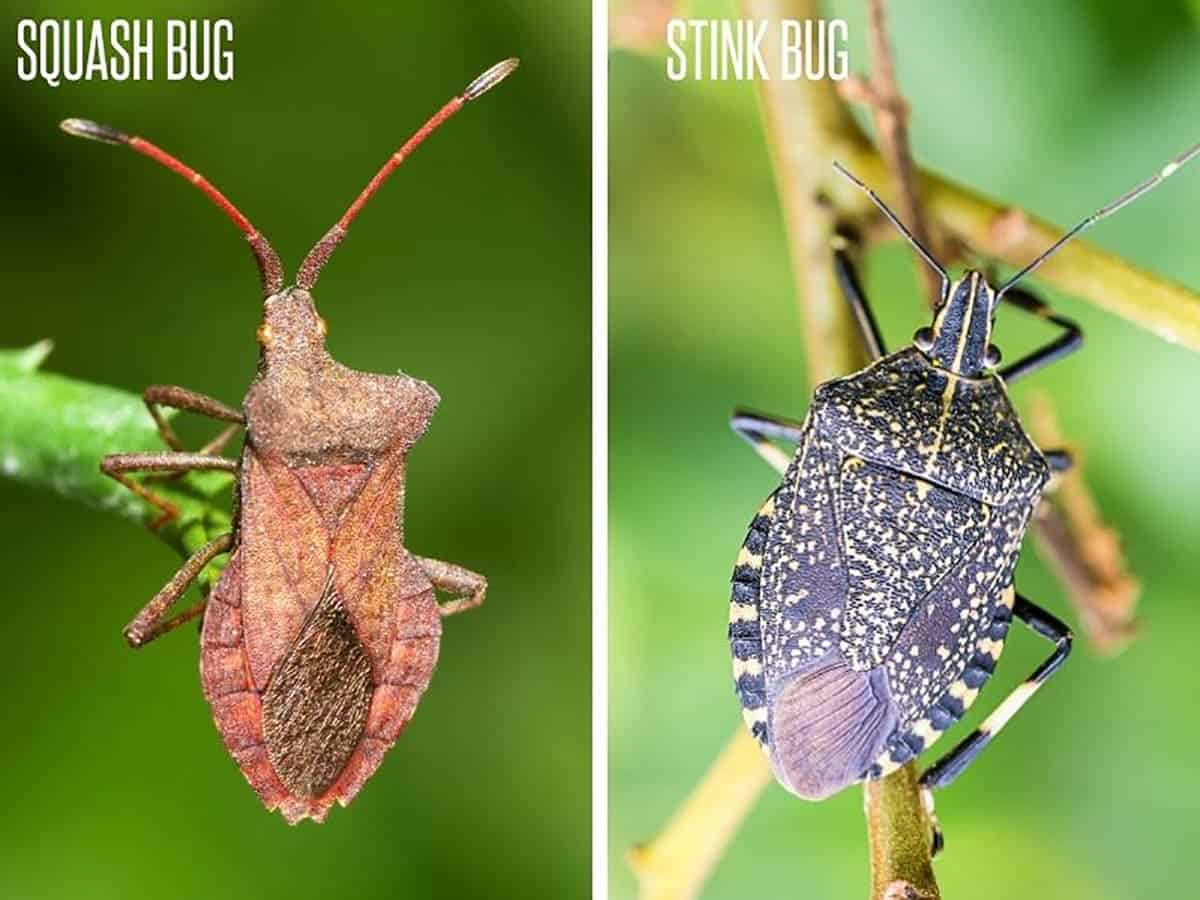
Females lay a unique pattern of elliptical eggs on the undersides of leaves. They are a deep orange color and are clustered into batches of about 10 to 20 on each leaf. As the eggs hatch, squash bug nymphs emerge, and they are about 1/10 inch and are typically a blue-gray to white color. They look like a miniaturized version of the adult squash bug. As the nymphs grow, they go through multiple stages, called instars.

What do they eat?
Squash bugs suck on the sap and juices in the stems, fruits, and leaves of cucurbits. They are most commonly found on summer squash (like zucchini), winter squash (like butternut), and pumpkins, but they may also be found on any other cucurbit crops (like watermelon, cantaloupe, and cucumbers).
What kind of damage do squash bugs do?
The first symptom you’ll see during a squash bug infestation is yellow or brown spots on the stems or leaves of the plant. It can be easy to miss this symptom, so most folks first notice a problem when they see wilting vines that do not bounce back after watering. After that, the leaves and stems will eventually turn brown or black, and crispy. Squash bugs inject a toxin into host plants that causes the spotting, wilting, and leaf death. This is called anasa wilt.

When a squash bug sucks the sap from the plants through its sharp mouthparts, it leaves large gaping holes in the plants that eventually completely kill off the portion of the plant that it has fed on. A heavy squash bug infestation can kill an entire plant (especially a young plant) in a matter of days.
Some squash bugs may also carry the cucurbit yellow vine disease (CYVD) bacterium. This may otherwise kill plants that survive a small infestation.
It’s important to note that bacterial wilt is a disease that is caused by bacterium spread by cucumber beetles, and it can also display similar symptoms to squash bug damage. It’s important to look for evidence of the actual insect before deciding on a treatment.
Are my veggies still edible?
Squash bugs tend to feed mostly on the stems and leaves of plants, and typically leave the fruits until last—so just as long as your veggies are in good shape, you are free to still enjoy them. Make sure to wash them well to ensure there are no nymphs or eggs on your veggies.
When are squash bugs active?
While squash bugs become most active during warm days in late spring, it’s important to know that they easily overwinter in the garden. Adult squash bugs spend their winter in the shelter of dead leaves, vines, and mulches. As soon as the weather warms, they head to squash plants to mate, and they lay eggs on the undersides of the leaves.
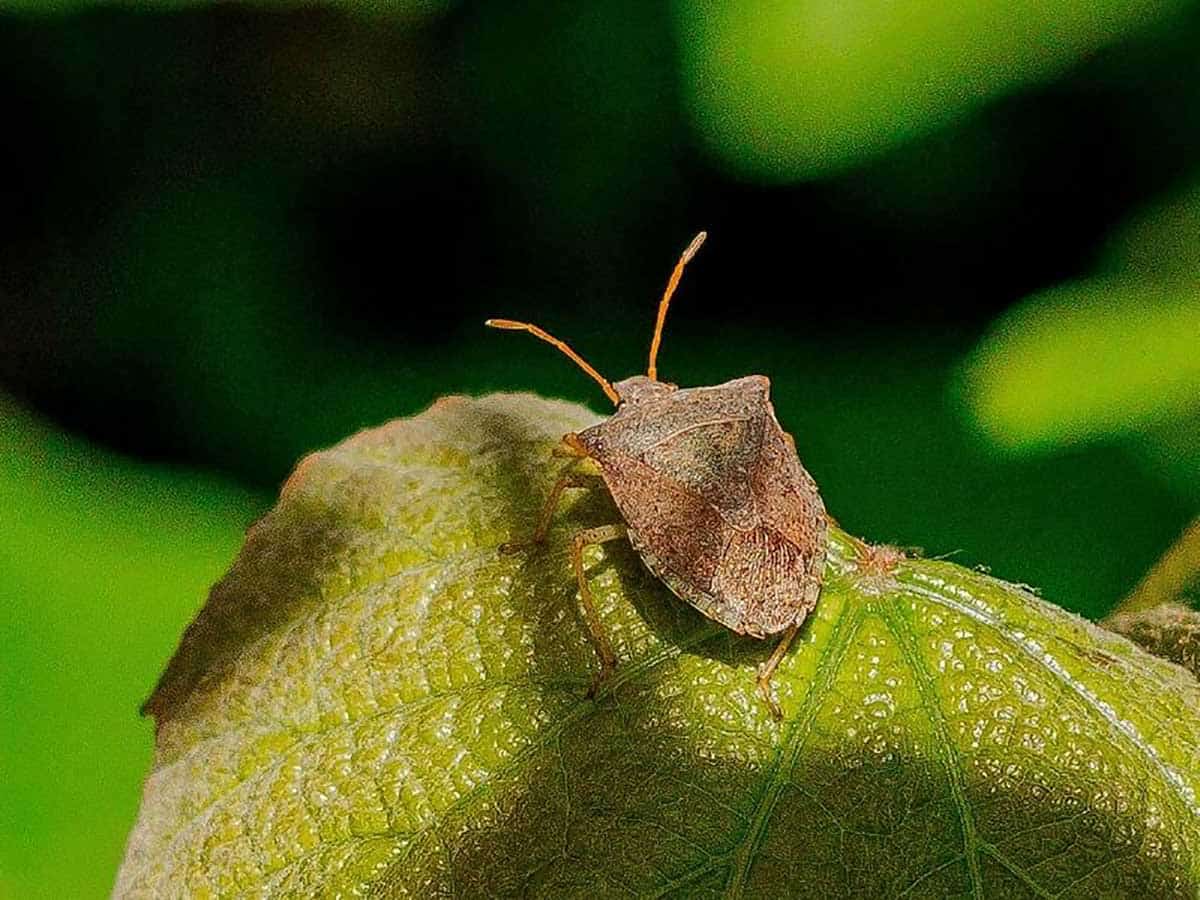
How do I prevent squash bugs?
With many garden pests, you can wait until you have a problem, but with squash bugs in particular, it is very important to focus on prevention—once you have a squash bug infestation, it’s hard to control. Here are some ways to prevent them:
Clear out all plant debris each fall: Because squash bugs overwinter in weeds, vines, and other plant debris, you’ll want to clear away as many hiding places as possible—especially if you had a previous squash bug infestation.
Crop rotation: If you have the space, you’ll want to keep cucurbits on a 2-3 year rotation—meaning you’ll want to not grow a squash plant in a bed that has had a squash plant in the past 2-3 years.
Plant resistant varieties: Some varieties are more resistant to squash bug infestation than others. These varieties aren’t immune, but they aren’t as attractive to squash bugs as other varieties. You can find resistant varieties in seed catalogs, but some good examples are Crook Neck Yellow Squash, Green Hubbard Squash, Royal Acorn Squash, Sweet Cheese Squash, and all kinds of Butternut Squash.

Plant trap crops: The opposite of resistant varieties are trap crops! These are cucurbits that are particularly appealing to squash bugs, and you can sacrifice them to trap squash bugs and let the bugs chow down on those plants instead of eating your favorite squash plants. Plant these about 2-3 weeks before you plan on planting your true squash crops. A common trap crop variety is Blue Hubbard Squash. Make sure you completely destroy the plant debris from your trap crops.
Companion plants: Planting strongly-smelling flowers or herbs near your squash can go a long way to reduce the squash bug population. Plants like marigolds, dill, nasturtium, and tansy are some of our favorites. Companion planting won’t completely remove the threat of squash bugs, but it can help a lot!

Row cover (maybe!): Floating row covers might help to reduce the number of squash bugs that enter your garden. However, they won’t prevent the infestation of squash bugs that overwintered in plant debris or mulch in your garden.
Increase beneficial insects who are a natural enemy of squash bugs: This is a long-term solution, but you’ll want to attract the natural enemies of squash bugs to your garden by planting certain herbs and flowers they like. Planting dill, Queen Anne’s lace, and calendula is a good way to attract one of the best natural enemies of squash bugs—the Tachinid Fly (Trichopoda pennipes).
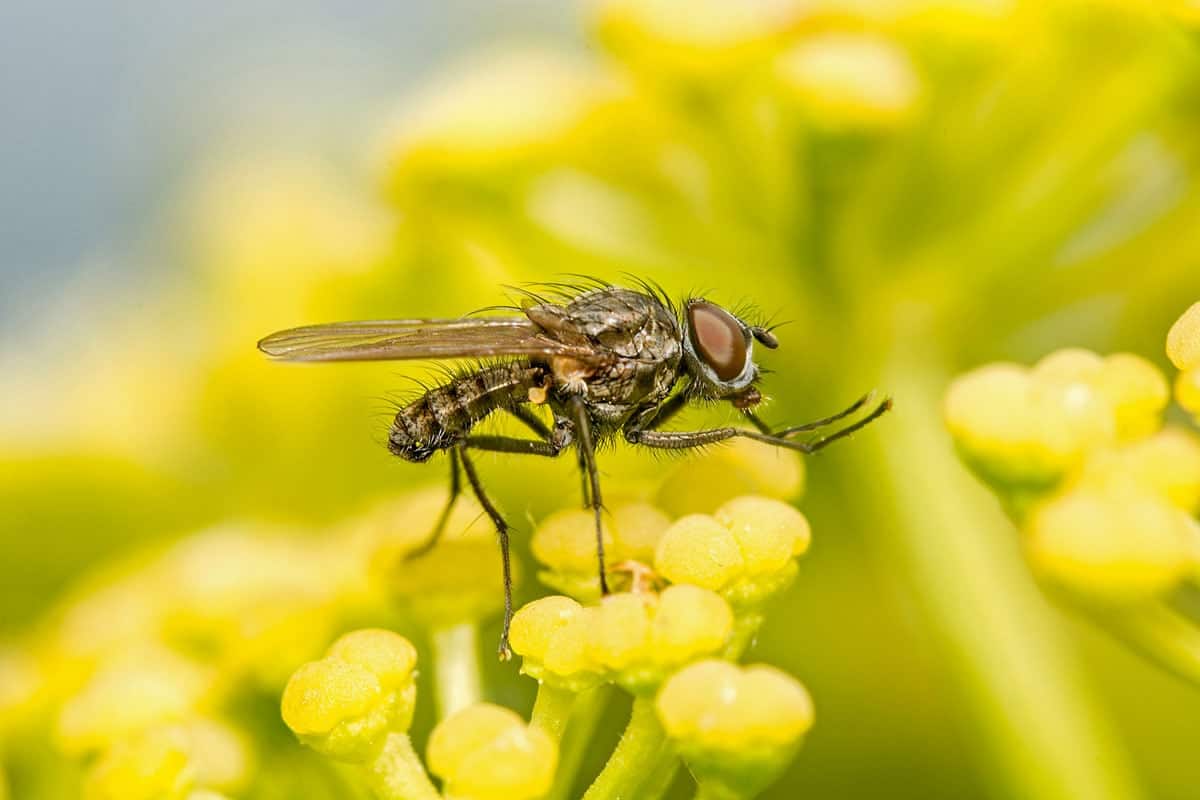
What are some non-chemical way to get rid of them?
Alright, so your prevention didn’t work—now what do you do? Well, early detection is key!
A light squash bug infestation can be tackled by disrupting the life cycle of the bugs. Heavy infestations are much harder to control, and it is typically easier to abandon the plant and destroy the plant debris instead of fighting the infestation. Here’s what to do if you find early squash bugs:
Pick off nymphs or adult bugs: Your goal is to disrupt the life cycle, so when you see nymphs or adult bugs, immediately pick them off your plants and drop them in a bucket of soapy water. Squash bugs do tend to hide under plants and under leaves, so you must lift up and look at all angles of the plant for this to be successful. Many gardeners also just squish them between their fingers or using a garden tool. Be warned: the adult bugs can stink when squished!
Squish egg clusters: When you see the tell-tale dark orange eggs on the undersides of leaves, use your fingers to squish and destroy the eggs.
When should I use insecticides?
There are three organic insecticide options that can help you out if you have a moderate or heavy infestation.
Neem oil: A good option for a moderate to heavy infestation is neem oil. Spray it on all leaves and stems, and make sure to follow the labels on this natural insecticide for the best results.
Diatomaceous earth: This microscopic rock is razor-sharp to soft-bodied insects—it cuts them so they dry up and die. Diatomaceous earth (DE) is a decent insecticide for targeting the nymph stage of squash bugs. It does not work on the hard-bodied adult bugs. Spread, sprinkle, or puff DE around the base and on the leaves and stems of the infested plants. DE is harmful to beneficial soft-bodied insects, too (like bees!) so we recommend you keep the DE far away from the squash flowers and preferably do not use it during the flowering stage at all. We also recommend you use food-grade DE—since you’ll hopefully be eating your veggies!

Insecticidal Soaps: To properly disrupt the life cycle of emerging squash bugs, you’ll need to completely saturate your plant with insecticidal soap at least every 3 days while you still see bugs on your plants. The insecticidal soaps works by penetrating the squash bug’s shell enough to weaken and dehydrate the insect.
How do I get rid of the eggs?
When you find a squash bug feeding on your plants, you’ll inevitably find the eggs hiding on the underside of leaves. The best option is to use your fingers to squish and destroy the eggs.
The most important thing to remember when dealing with squash bugs is that prevention is your very best friend! This is truly a case where an ounce of prevention is worth a pound of cure. If you are planning on planting cucurbits, plan on there being squash bugs, and make sure you have your prevention strategies in place early.

